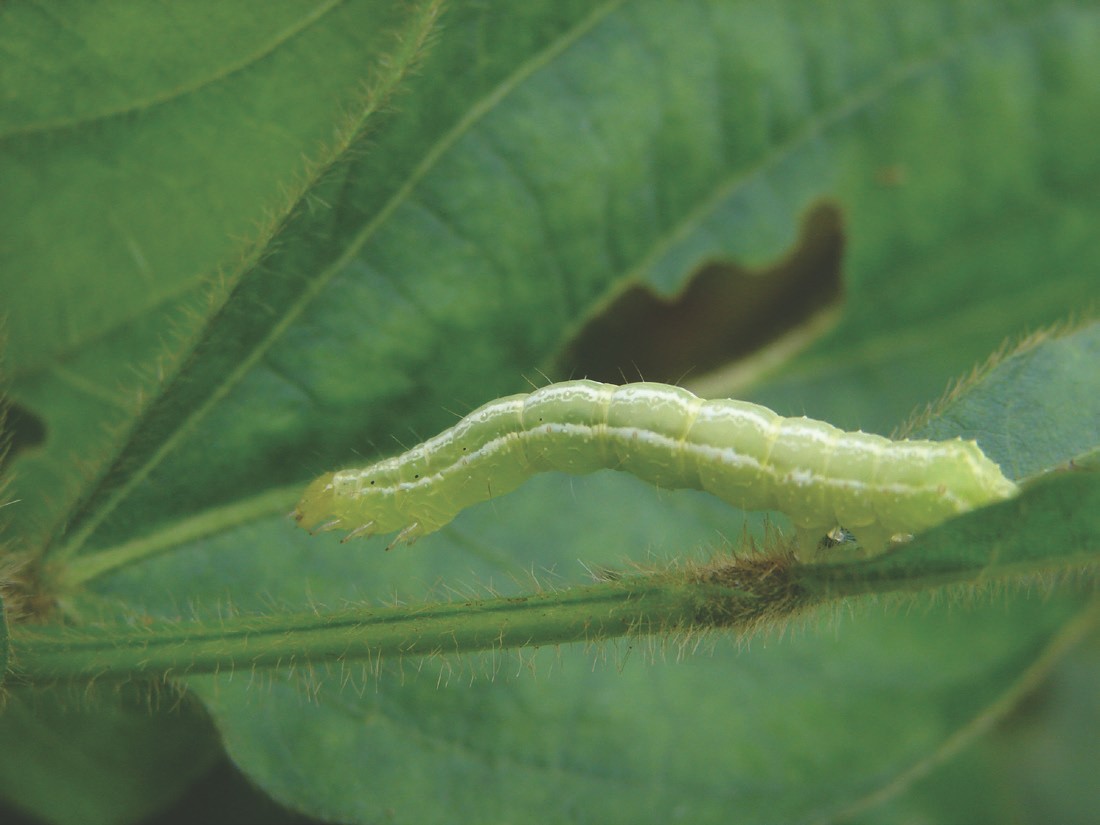Integrated Management of Soybean Pests: The Example of Brazil
Soybean [Glycine max] is the most commercialized agricultural product in Brazil, which stands out in the world ranking as the second largest producer of this protein and oilseed crop. Cultivated throughout the country and with prospects of expanding into the North and Northeast, it has become the most important commodity in Brazilian agribusiness. Among the major phytosanitary problems that injury this crop, besides the Asian soybean rust (Phakopsora pachyrhizi), insects cause considerable economic damage.
Aiming to have an environment with less aggressive agricultural practices for the control of these insects, the adoption of Integrated Pest Management (IPM) is an advantage for producers, seeking to reduce environmental impact and production costs. IPM is an important tool for sustainable agriculture and was established in Brazil for the soybean crop in the 1970s. It is characterized by the use of different control tactics in a joint way, aiming to maintain the balance of the agroecosystem, with the reduction of environmental, social and economic impacts.
Despite the benefits of soybean-IPM, sometimes, immediate control practices are prioritized, such as that are calendar based. Oftentimes, insecticides are still used at the first indication of the appearance of insect pests. However, with the occurrence of Helicoverpa armigera (Lepidoptera: Noctuidae) species in Brazil, during the 2012/2013 harvest, there has been a greater awareness to use other control tactics, favoring the IPM strategies.
There is a complex of insects that occur in soybean crops in Brazil. The most frequent insects requiring major care are lepidopterans and stink bugs. These insects cause direct damage (yield reduction) and indirect damage (reduce grain quality) to the soybean crop.
In addition, there is the occurrence of cucurbit beetle, Diabrotica speciosa (Coleoptera: Chrysomelidae), and whitefly, Bemisia tabaci (Hemiptera: Aleyrodidae), with the potential to cause economic damage to soybean. B. tabaci causes damages due to the secretion of honeydew, that causes sooty mold growth, which interferes with photosynthesis, as well as transmitting viruses such as the Carlavirus Cowpea mild mottle virus (CpMMV).
Of the defoliating insects, consumption of the leaf area and consequently reduction of the photosynthetic rate are characterized as the main damage to the soybean crop. The velvetbean caterpillar [Anticarsia gemmatalis, Lepidoptera: Noctuidae] is historically recognized as a key pest of the crop and until the late 1990s the soybean looper, Chrysodeixis includens (Lepidoptera: Noctuidae), was a secondary pest. However, from the year 2000, this pest began to occur more extensively in this crop and, currently, it is considered the main lepidopteran pest in soybeans.
Outbreaks of caterpillars previously considered unimportant are causing a change in the population dynamics of insect occurrence in soybean crops in Brazil. The caterpillars of the genus Spodoptera are expanding the most, with attacks in both the vegetative and reproductive stages of plant growth.
Similarly, the genera Helicoverpa and/or Heliothis in the 2012/2013 crop were reported by farmers for attacking soybean prior to harvest. Other arthropods that attack soybean leaves are beetles of the Chrysomelidae family, often found in production areas with succession of corn-soybean-corn crops. From sucking insects, stink bugs cause direct damage (yield reduction) and indirect damage (reducing grain quality) to soybean crop. From the injuries caused by this pest, abortion of grains and pods, reduction of seed germination rate and vigor, reduction of grain oil content and physiological disturbances, such as maturation retardation, can occur. In Brazil, the main species of stink bugs encountered in attacking the soybean crop are the brown stink bug Euschistus heros, small green-spotted bug, Piezodorus guildinii, and the green stink bug, Nezara viridula (Hemiptera: Pentatomidae).
This is an extract of the full article published in: Outlooks on Pest Management – August 2017 issue.
The full text of this article is available to subscribers of Outlooks on Pest Management.
Non-subscribers may buy & download full text article.
Authors: Regiane C. O. F. Bueno, Carlos G. Raetano, Joaz Dorneles Junior, Fernando K. Carvalho
Category: Agriculture












